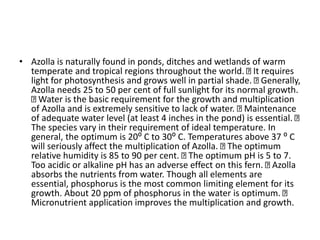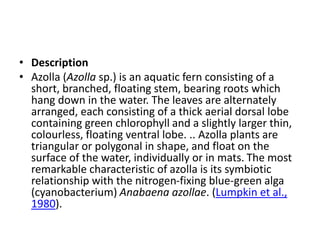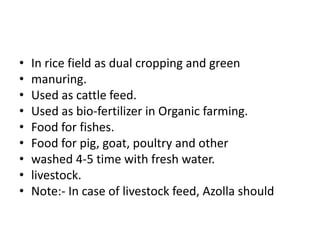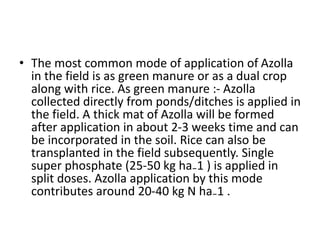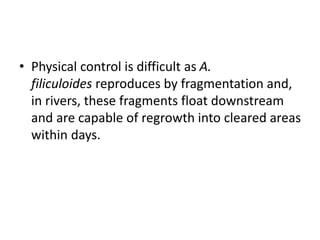Azolla is a small free-floating aquatic fern that grows on water surfaces. It has a symbiotic relationship with a nitrogen-fixing cyanobacterium. Azolla prefers warm temperatures, partial sunlight, and nutrient-rich water. It is used as a biofertilizer in rice paddies and organic farming to fix nitrogen and increase crop yields. Herbicides can be used to control heavy infestations, but the weevil Stenopelmus rufinasus has also been used successfully as a biological control agent in some areas.


